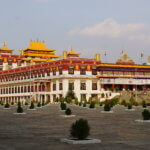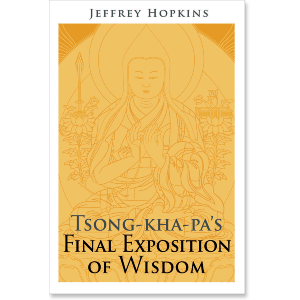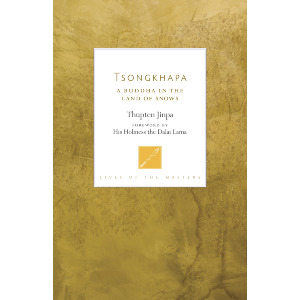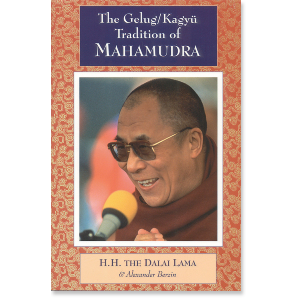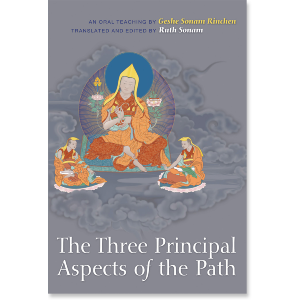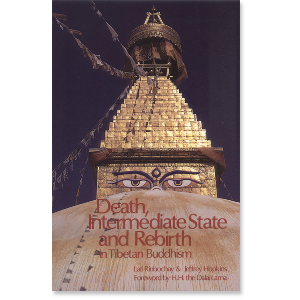| The following article is from the Autumn, 1990 issue of the Snow Lion Newsletter and is for historical reference only. You can see this in context of the original newsletter here. |
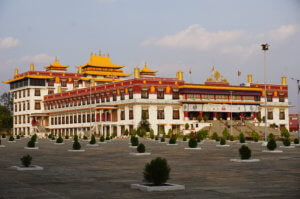
Drepung Loseling Monastery Temple (Karnataka - India), Photo by François Zeller License -https://creativecommons.org/licenses/by-sa/2.0/deed.en
1416 Tibet
Drepung Monastery was established in Tibet in 1416 by Jamyang Choje [Jamyang Choge Tashi Palden (1397–1449)]. Eventually it became the largest monastic university in the world, with up to 12,000 lamas and monks from all over Tibet, the surrounding Central Asian kingdoms, China, Japan, and Russia.
After completing their course of studies and undergoing rigorous examinations, these lamas would return to their home regions and become important teachers of the various Tibetan Buddhist spiritual traditions.
The Chinese Invasion of Tibet
All this ended with the forced closing and destruction of Tibetan religious institutions following the holocaust unleashed by the Chinese Communists in the 1950's.
To preserve their traditions and their lives, several hundred lamas from Drepung Loseling escaped to India, settling temporarily in West Bengal.
Continuing their Traditions in Exile
Eventually, they built a new monastery on a small piece of land in Karnataka, South India, which the Indian government donated to them in 1971.
The lamas moved to their new home, and with great enthusiasm began the long process of clearing the land of jungle, building new housing facilities, classrooms, and a prayer hall, and cultivating the remaining 140 acres of land. Soon, they were growing corn and rice. The monks consumed most of the rice, and sold the corn at local markets to help support the monastery.
Since then, the population of the monastery has grown from 250 to 1,000 due to the continual influx of young monks arriving from Tibet. These refugees from the communist occupation risk their lives in order to escape the brutal Chinese policies of regression and apartheid.
At Drepung in India, they find the freedom to practice their religion and to secure the education and training which they are denied in their own country.
The policy of the monastery has always been to accept whomever comes to it, without regard to their ability to contribute financially to their own support. Most of these young refugees, fortunate to have escaped with their lives from the tightening net of Chinese security, arrive empty-handed, and as a consequence, the monastery now finds itself greatly overcrowded and unable to adequately support the growing numbers of student monks.
The Mystical Arts of Tibet: Sacred Music Sacred Dance Performance
In 1988-89, eight Tibetan lamas from the Drepung Loseling Monastery in South India toured 108 cities in North America to present Sacred Music, Sacred Dance: The Mystical Arts of Tibet. Performing chants, dances and invocations for purification, spiritual renewal and world peace, the tour was the monastery's contribution to the world peace movement.
The performances were enthusiastically received by audiences from Los Angeles to Vancouver, Montreal to Miami, Chicago to Dallas, Memphis to Fort Wayne. Throughout the tour people expressed an interest in keeping in touch with the lamas and their monastery.
Many friends even offered to help the refugee monastic community in such ways as foster-sponsoring a young monk, contributing medicines, and offering to provide technical advice on an ongoing basis. The proceeds from the tour of Sacred Dance have helped to alleviate the financial strain on the monastery and to give it hope for its future.
Education Trust/Fund
The Drepung Loseling Educational Trust has been established to provide support and encouragement to Drepung Loseling Monastery and in particular to the young refugee monks seeking sanctuary there.
Previously, The Trust felt that it would be helpful to publish a newsletter to keep friends of Drepung Loseling abreast of developments. It was a thrice-yearly publication giving a fuller picture of the monastery's life and of the monks and lamas who are working to preserve and perpetuate their unique and endangered Tibetan Buddhist heritage.
Now, learning more about their Cultural and Support programs by visiting: Educational Fund.
For More Information:

